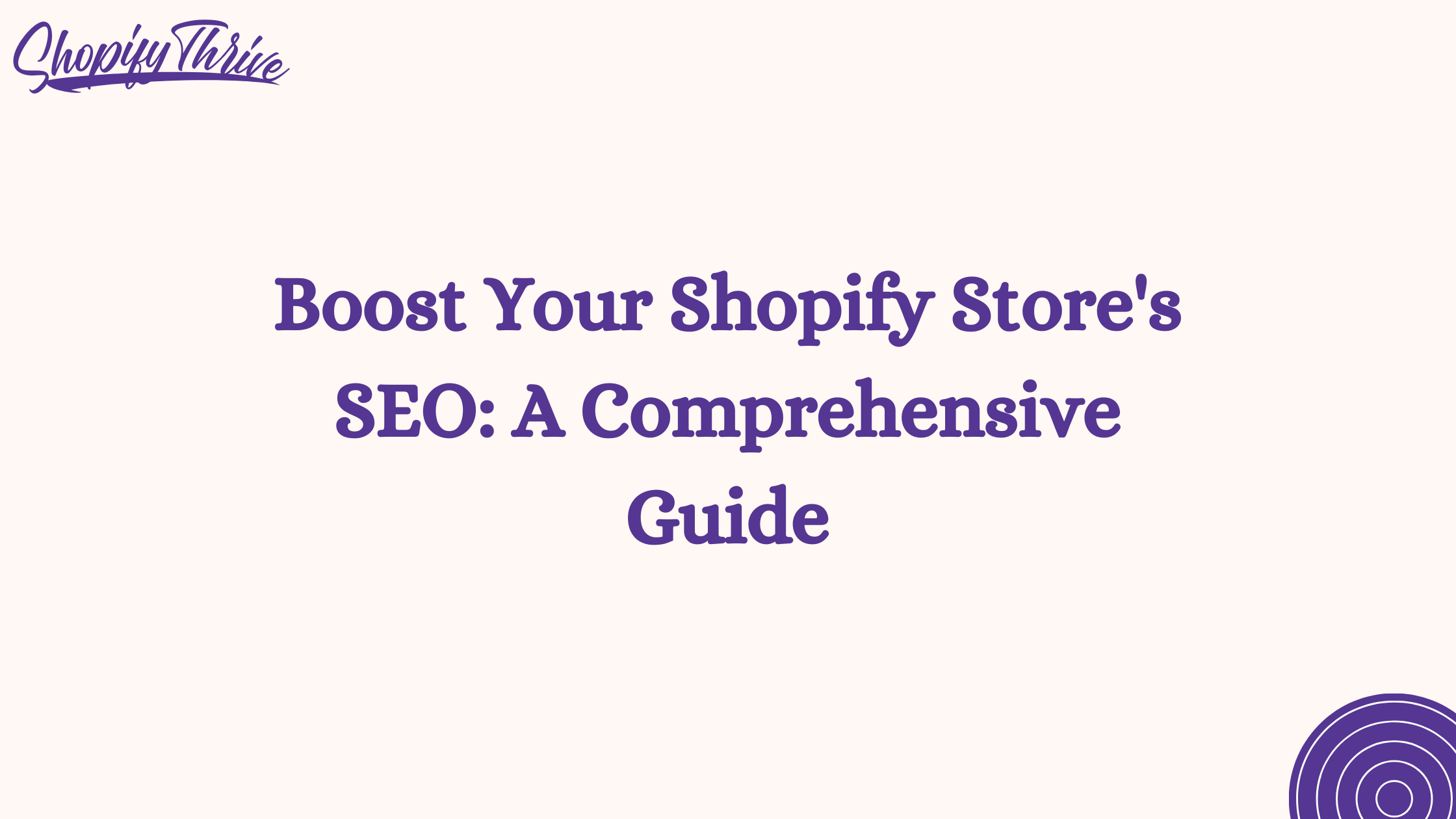
Noor
Boost Your Shopify Store’s SEO: A Comprehensive Guide
- May 22, 2023
- , 8:19 pm
- , Shopify Tips
Are you looking to skyrocket your Shopify store’s visibility on search engine result pages? If you’re aiming to outrank your competitors and drive organic traffic to your e-commerce website, you’ve come to the right place. In this comprehensive guide, we will delve into the world of Shopify SEO, providing you with valuable insights, strategies, and best practices to optimize your store and boost its search rankings. From keyword research and content optimization to site structure, link building, and technical SEO, we’ll cover all the essential aspects you need to know to ensure your Shopify store shines in the competitive online landscape. Let’s dive in and unlock the power of effective SEO for your Shopify store!
Introduction
Welcome to our comprehensive guide on optimizing your Shopify store for search engines! In today’s competitive online landscape, it’s crucial to ensure that your e-commerce website ranks well on search engine result pages (SERPs) to attract organic traffic and drive sales. In this article, we will dive deep into the world of Shopify SEO and provide you with valuable insights, strategies, and best practices to outrank your competitors and increase your online visibility.
1. Understanding Shopify SEO
Shopify SEO refers to the process of optimizing your Shopify store to improve its visibility on search engine result pages. By implementing effective SEO strategies, you can enhance your website’s organic rankings, increase targeted traffic, and ultimately boost sales. Successful Shopify SEO involves various elements, including keyword research, on-page optimization, site structure, content creation, link building, technical SEO, user experience, and analytics.
2. Keyword Research and Optimization
Keyword research plays a pivotal role in Shopify SEO as it helps you identify the terms and phrases your target audience is using to find products or services like yours. By integrating these keywords strategically throughout your website, you can increase your chances of ranking higher in search results. Here are some essential steps for effective keyword research and optimization:
Identifying Target Keywords
- Use keyword research tools like Google Keyword Planner, SEMrush, or Ahrefs to discover relevant keywords with high search volume and low competition.
- Analyze long-tail keywords that are specific to your products or niche.
- Consider user intent and target keywords that align with your customers’ search intent.
Optimizing On-Page Elements
- Incorporate target keywords in your page titles, headings, and meta descriptions.
- Utilize keyword-rich alt tags for images.
- Optimize your product titles and descriptions with relevant keywords.
Crafting Engaging Meta Tags
- Write compelling meta titles and descriptions that entice users to click.
- Keep meta tags concise, relevant, and within character limits.
- Include target keywords naturally while maintaining readability.
Creating SEO-Friendly URLs
- Use descriptive URLs that include relevant keywords.
- Remove unnecessary parameters or numbers from URLs.
- Utilize hyphens to separate words in URLs for better readability.
3. Site Structure and Navigation
A well-structured and user-friendly website navigation is not only crucial for enhancing user experience but also plays a significant role in Shopify SEO. Here are some key aspects to consider:
Organizing Your Product Categories
- Group your products into relevant and logical categories.
- Create a clear hierarchy for easy navigation and understanding.
- Implement breadcrumb navigation to provide users with a clear path back to the main category.
Implementing Clear Navigation Menus
- Design intuitive and easy-to-use navigation menus.
- Ensure all important pages are accessible from the main menu.
- Use descriptive anchor text and avoid generic labels.
Utilizing Breadcrumbs for User Experience and SEO
- Implement breadcrumb navigation to provide hierarchical context.
- Make breadcrumbs clickable for easy navigation.
- Utilize rich snippets to display breadcrumbs on search engine result pages.
4. Content Optimization
Creating high-quality and optimized content is paramount for Shopify SEO. By following these guidelines, you can improve your content’s visibility and relevance:
Writing Unique and Descriptive Product Descriptions
- Craft unique and compelling product descriptions.
- Highlight the key features, benefits, and unique selling points of each product.
- Avoid duplicating content from other sources or manufacturers.
Incorporating Relevant Keywords Naturally
- Integrate target keywords naturally within your content.
- Avoid keyword stuffing, as it can harm your rankings.
- Write for your audience first, and optimize for search engines second.
Utilizing Heading Tags and Proper Formatting
- Utilize heading tags (H1, H2, H3) to structure your content.
- Incorporate keywords in heading tags when appropriate.
- Use bullet points and numbered lists to improve readability.
Implementing Rich Snippets and Structured Data
- Utilize structured data markup, such as Schema.org, to provide search engines with additional context about your content.
- Implement rich snippets to enhance your search results with review stars, product prices, and other relevant information.
- Use relevant schema types, such as Product, Organization, or Local Business, depending on your website’s content.
Conclusion
Optimizing your Shopify store for search engines is a continuous process that requires attention to detail, strategic planning, and ongoing maintenance. By implementing the strategies and best practices outlined in this comprehensive guide, you can enhance your website’s visibility, attract targeted organic traffic, and drive the success of your e-commerce business. Remember to stay updated with the latest SEO trends, monitor your performance regularly, and adapt your strategies to meet the evolving needs of your audience and search engines.
Ready to transform and grow your shopify brand?
See why companies like Lash Artisan, Lust For Lashes, joemetry.co and more
launched their shopify Brand With ShopifyThrive.
